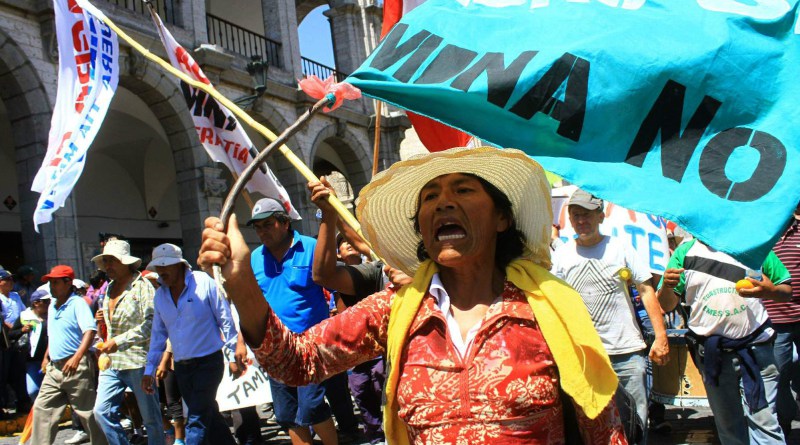By Rachel Quartararo, Research Associate at the Council on Hemispheric Affairs
|

The citizens of Peru are taking a stand against the development of Tía María, an open pit copper mine in the Valle de Tambo in Islay, a province in the country's southern Arequipa Region.[1] The Mexican-owned mining company, Southern Copper, plans to invest over $1.4 billion USD in the project, which would make Tía María the second largest copper mine in the world. Peru's Deputy Minister of Mines Romulo Mucho estimated that the mine would generate approximately $150 million USD in royalty revenue annually and produce $700 million USD in exports from the production of 120,000 metric tons of copper cathodes each year.[2] The project received final approval by the state government in 2014, but since 2009 it has been continuously delayed due to ongoing resistance from the rural communities in the region. Local residents have been up in arms since mid-March, fearing that the mine will cause irreversible damage to their environment, water systems, and livelihoods.
A History of Exploitation
Peru's struggle with Tía María and with resource extraction as a whole is highly contextual. It is deeply intertwined in the nation's political and economic history, which has, in turn, shaped the various facets of Peruvian identity. In the past two decades, the Peruvian Andes have seen a dramatic increase in mineral extraction and exploitation owing in large part to groundwork that was laid by former President Alberto Fujimori during his rise to power in 1990. Fujimori's presidency was highly controversial due to his conviction of widespread corruption, human rights violations, and adherence to the neoliberal agenda. Economic growth was achieved through economic policies including the privatization of state-run industries, which reintegrated Peru into the global economic system. As a result, Peru's mining and energy extraction industry began to attract foreign investment from transnational mining corporations.[3] The liberalization of Peru's market economy and the implementation of attractive legal and tax regimes have transformed the country into a leading exporter of base and precious metals. Currently, Peru ranks third in the world as a producer of copper and zinc. Copper production is expected to double within the next year, and Peru's expansive and untapped copper deposits are considered "golden opportunities" for international investors.[4]
>>>To continue reading this article, please click here.
|

No comments:
Post a Comment